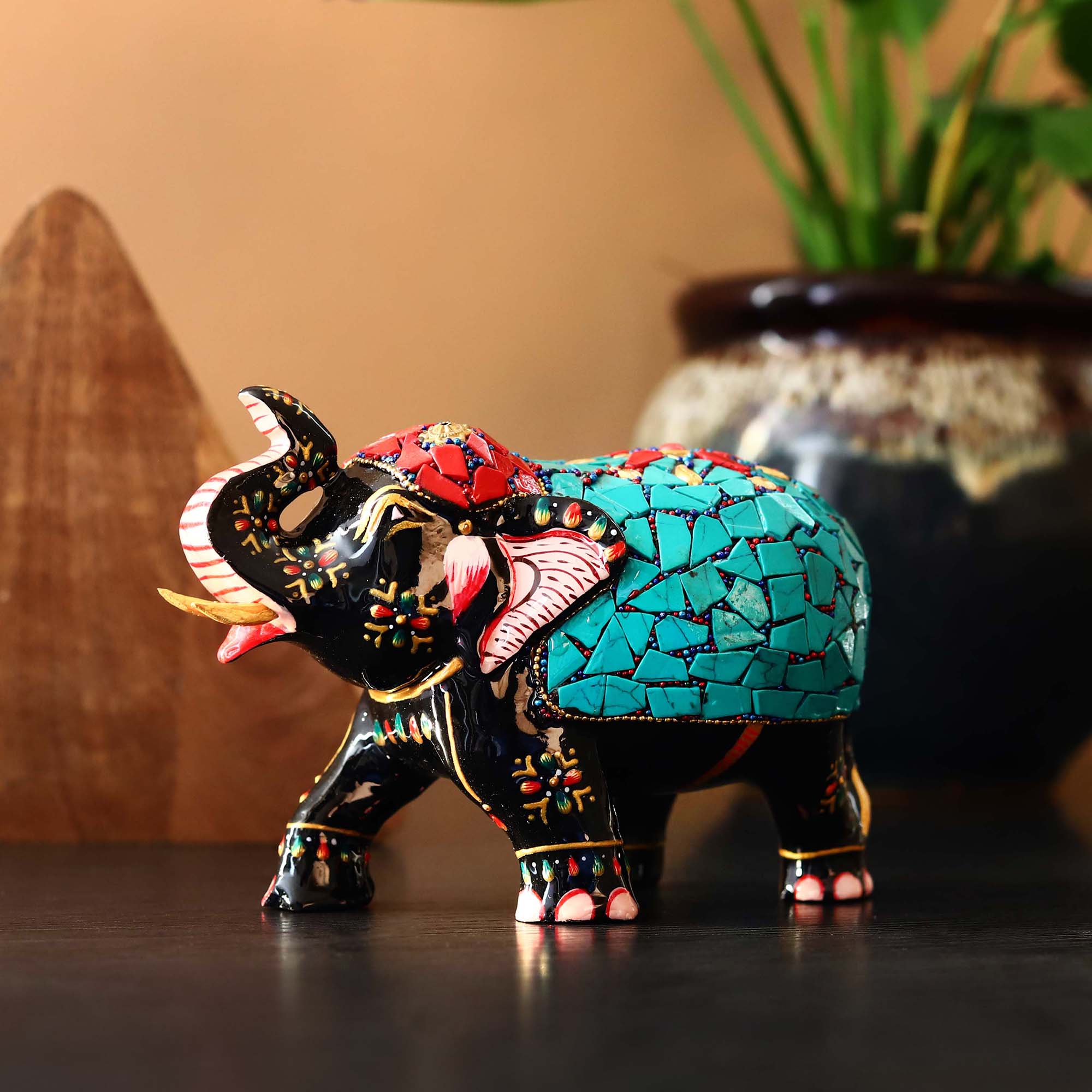Rajasthani Handicrafts: Intro
Rajasthan, the land of kings and vibrant culture, is renowned not only for its majestic forts and palaces but also for its exquisite handicrafts that reflect the state’s rich heritage. The artistic traditions passed down through generations have made Rajasthani Handicrafts a symbol of cultural identity and craftsmanship. From intricate textiles to elaborate pottery, the craftsmanship of Rajasthan is a testament to the skill and creativity of its artisans.
Some Top Rajasthani Handicrafts:
Traditional Crafts:
Pottery
Pottery in Rajasthan holds a significant place in the state’s handicrafts. The distinct blue pottery of Jaipur, adorned with floral motifs in vivid blue hues, is a testament to the skilled craftsmanship of artisans. Using a unique technique, the pottery is decorated with a blend of quartz stone powder, powdered glass, multani mitti (fuller’s earth), and sodium sulfate, giving it an exceptional finish.
Textiles
The colorful and detailed textiles of Rajasthan are world-famous. From the tie-and-dye Bandhani to the block-printed fabrics of Sanganer and Bagru, each piece narrates tales of tradition and artistry. The traditional ‘Leheriya’ and ‘Ajrakh’ prints are iconic, showcasing a blend of vibrant colors and intricate patterns.
Jewelry
Rajasthan’s jewelry is a reflection of the state’s regal heritage. Kundan, Meenakari, Thewa, and Polki are some of the traditional jewelry-making techniques that have been perfected over centuries. Adorned with precious and semi-precious stones, the intricate designs of Rajasthani jewelry are often seen as a symbol of status and elegance.
Woodwork and Furniture
The exquisite wooden furniture of Rajasthan, intricately carved with motifs inspired by nature and folklore, is a testament to the skill of local artisans. From elaborately carved doors to ornate tables and chairs, each piece reflects a harmonious blend of art and functionality.
Mirror Work and Embroidery:
The vibrant mirror work and intricate embroidery of Rajasthan are integral to its textile heritage. The ‘gota-patti’ work of Jaipur and the ‘phulkari’ embroidery of the Shekhawati region are notable for their use of mirrors, beads, and colorful threads. These techniques not only enhance the beauty of fabrics but also carry stories of tradition, often reflecting the wearer’s social and cultural identity.
Puppetry and Miniature Painting:
Rajasthan’s rich cultural landscape is also reflected in its performing arts and paintings. Puppetry, known as ‘Kathputli,’ is a traditional form of storytelling using intricately crafted puppets dressed in vibrant attire. Miniature paintings, characterized by their intricate detailing and vivid colors, depict themes from mythology, folklore, and royal courts, showcasing the artistic finesse of the state’s artisans.
Metalwork and Lacquerware:
Metalwork, including brass, copper, and silver, is another significant craft in Rajasthan. The skilled artisans create exquisite utensils, sculptures, and decorative items adorned with intricate engravings and filigree work. Lacquerware, particularly from the town of Alwar, involves applying lacquer to wood and then embellishing it with vibrant colors and designs, producing stunning artifacts.
Impact on Communities and Tourism:
The handicraft industry plays a pivotal role in the socio-economic fabric of Rajasthan. It provides livelihoods to a substantial section of the population, especially in rural areas where these crafts are deeply rooted. The preservation and promotion of these crafts not only sustain cultural traditions but also contribute significantly to tourism, attracting visitors from across the globe eager to witness the artisans’ skills firsthand.
Sustainability and Innovation:
Amidst modernization and changing consumer preferences, artisans are embracing innovation while staying true to traditional techniques. Efforts towards sustainability, such as using natural dyes and eco-friendly materials, are gaining traction, appealing to environmentally conscious consumers. Additionally, collaborations with contemporary designers and brands are opening new avenues for these crafts, infusing them with a modern touch without compromising their authenticity.
Artisan Communities:
Rajasthan is home to numerous artisan communities, each specializing in a particular craft. The ‘Kumhar’ community excels in pottery-making, while the ‘Chhipa’ community is known for their expertise in block printing. These communities have preserved their ancestral crafts and techniques, passing them down through generations, contributing significantly to the state’s rich cultural tapestry.
Market Influence:
The markets of Rajasthan, such as Jaipur’s Johari Bazaar and Jodhpur’s Sardar Market, are treasure troves of handicrafts. Tourists and locals alike flock to these vibrant hubs to witness the craftsmanship firsthand and purchase these unique pieces. The government has also taken steps to promote these handicrafts by organizing fairs and exhibitions, providing artisans with a platform to showcase their skills to a wider audience.
Challenges and Revival:
While Rajasthani handicrafts have gained international recognition, artisans face challenges in preserving these age-old crafts. Mass production, competition from machine-made products, and fluctuating market demands pose threats to these traditional crafts. Additionally, the lack of proper infrastructure and access to markets at times hinders the growth of artisans.
However, various initiatives by governmental and non-governmental organizations are working towards the revival and sustenance of these crafts. Skill development programs, financial support, and market linkages aim to empower artisans, ensuring the continuation of these crafts for generations to come.
Global Appeal:
Rajasthani handicrafts have transcended borders and gained appreciation on the global stage. The intricate designs, vibrant colors, and exceptional craftsmanship have captivated the attention of art connoisseurs worldwide. Exhibitions and trade fairs showcasing these crafts have further amplified their reach, leading to international collaborations and opportunities for artisans.
Conclusion:
Rajasthani Handicrafts are not merely products; they are a testament to the rich cultural heritage and artistic excellence of the region. The dedication of artisans, the intricate craftsmanship, and the timeless beauty of these crafts continue to fascinate and enthrall people around the world. Preserving and promoting these traditional crafts is not just about sustaining an industry but safeguarding a legacy that represents the soul of Rajasthan.
